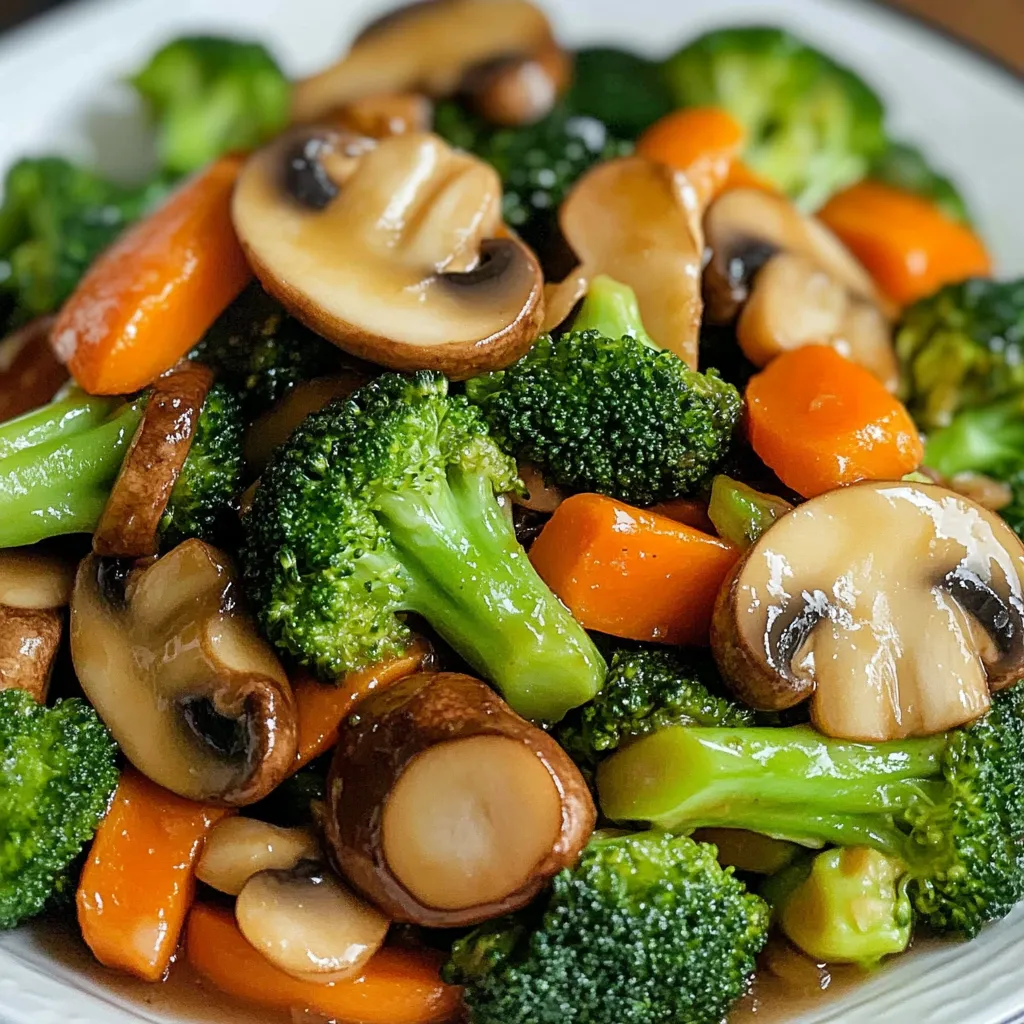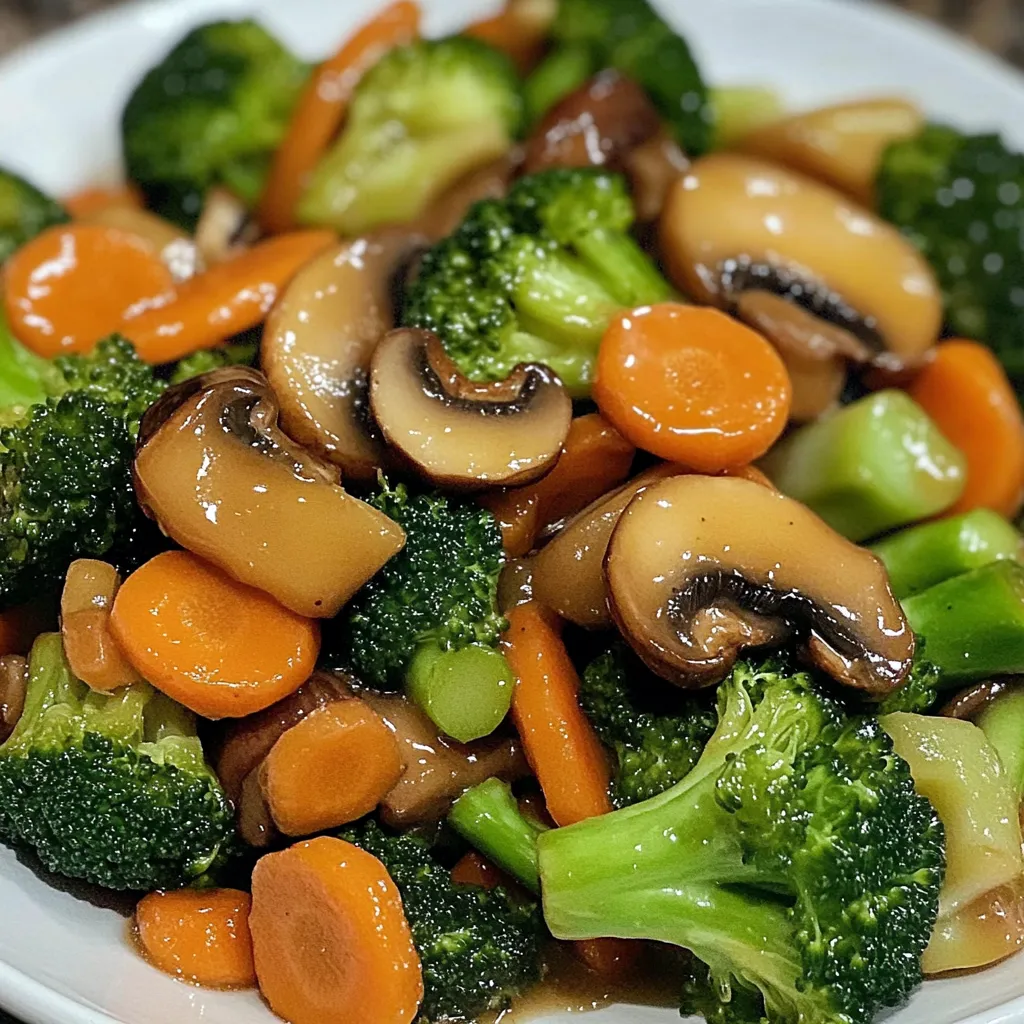 Save
Save
Quick vegetable stir-fry brings vibrant colors and fresh flavors to your table in just 15 minutes, making it the perfect solution for busy weeknights or healthy meal additions. This versatile dish combines crisp-tender vegetables with a savory garlic soy glaze that enhances each ingredient's natural taste without overwhelming them. Whether served as a nutritious side dish or transformed into a complete meal with added protein, this stir-fry delivers maximum flavor with minimal effort.
I developed this recipe during a particularly hectic week when I needed something healthy, quick, and satisfying that wouldn't leave me feeling sluggish. The beauty lies in how the high heat cooking preserves the vegetables' natural crunch while the simple sauce ties everything together without masking their individual flavors. My family now requests this stir-fry regularly, especially when we want something light yet filling that pairs with almost any main course.
Fresh Ingredient Selection
- Fresh broccoli florets (1 cup): Choose bright green heads with tight, compact florets; avoid yellowing or flowering buds which indicate age
- Fresh carrots (1/2 cup sliced): Select firm, bright orange carrots and slice thinly for quick, even cooking that maintains slight crunch
- Button or shiitake mushrooms (1 cup sliced): Fresh mushrooms should feel firm and dry; shiitake adds earthier flavor while button mushrooms provide mild taste
- Unsalted butter or olive oil (2 tablespoons): Butter adds richness while olive oil provides cleaner flavor; both create proper cooking medium for high-heat sautéing
- Fresh garlic cloves (2 large): Minced fresh garlic delivers aromatic punch that forms the flavor foundation; avoid pre-minced for best results
- Low-sodium soy sauce (1 tablespoon): Provides umami depth and saltiness; low-sodium allows better control over final seasoning levels
- Cornstarch (1 teaspoon): Creates silky sauce that coats vegetables evenly; potato starch can substitute if cornstarch unavailable
- Cold water (2 tablespoons): Dissolves cornstarch smoothly and creates proper sauce consistency when heated
- Freshly ground black pepper (1/4 teaspoon): Adds subtle heat and complexity; freshly ground provides superior flavor to pre-ground
- Fine sea salt (1/4 teaspoon): Enhances all other flavors and balances the soy sauce saltiness
Perfect Cooking Method
- Creating Smooth Sauce Base
- Whisk together soy sauce, cornstarch, and cold water in a small bowl until completely smooth with no lumps remaining. This slurry technique prevents the cornstarch from clumping when added to the hot pan and ensures a silky, glossy finish to the final dish. Set this mixture aside where you can easily reach it during the fast-paced cooking process.
- Preparing High-Heat Foundation
- Heat your chosen fat in a large skillet or wok over medium-high heat until it shimmers and moves freely around the pan. The pan should be hot enough that a drop of water sizzles and evaporates immediately upon contact. This high temperature is crucial for achieving the characteristic wok hei flavor and maintaining vegetable crispness.
- Building Aromatic Base
- Add minced garlic to the hot oil and stir constantly for 15-20 seconds until fragrant but not browned. The garlic should sizzle immediately upon contact with the oil, releasing its aromatic compounds without burning, which would create bitter flavors that would overpower the delicate vegetables.
- Strategic Vegetable Addition
- Add sliced carrots first since they require the longest cooking time to reach proper tender-crisp texture. Stir-fry for exactly 2 minutes, keeping them moving constantly to ensure even cooking and prevent sticking. The carrots should maintain their bright orange color while developing slight caramelization on the edges.
- Completing Vegetable Medley
- Add broccoli florets and sliced mushrooms simultaneously, continuing to stir-fry for 3-4 minutes until the broccoli turns bright green and both vegetables reach tender-crisp perfection. The mushrooms should release their moisture and begin to develop golden edges while the broccoli maintains its vibrant color and slight bite.
- Final Sauce Integration
- Give the prepared sauce mixture a quick stir to recombine, then pour it evenly over the vegetables. Toss everything together quickly and continuously for 1 minute until the sauce thickens and creates a glossy coating on all the vegetables. The cornstarch will activate from the heat and create the perfect consistency.
 Save
Save
Through countless batches of this stir-fry, I've discovered that the secret lies in respecting each vegetable's individual cooking requirements while maintaining the high heat that gives stir-fries their characteristic flavor. The carrots need that extra time to soften slightly, while the mushrooms and broccoli cook quickly and can become mushy if overdone. This timing dance creates the perfect harmony of textures that makes each bite interesting.
Creative Variations
Transform this basic recipe into exciting new dishes by incorporating different vegetables and flavor profiles that suit your preferences or seasonal availability. Snow peas, bell peppers, and snap peas add sweetness and crunch, while zucchini and yellow squash provide mild flavors that absorb the sauce beautifully. Cauliflower florets can substitute for or complement the broccoli, offering similar texture with slightly different nutritional benefits.
Serving Suggestions
This versatile stir-fry shines as a side dish alongside grilled chicken, baked fish, or roasted pork, where its light, fresh flavors complement richer main courses without competing for attention. The colorful presentation adds visual appeal to any plate while providing essential nutrients that round out heavier protein-focused meals.
Storage and Reheating
Store leftover stir-fry in airtight containers in the refrigerator for up to three days, though the vegetables will continue to soften slightly over time. The flavors actually improve overnight as the sauce penetrates the vegetables more thoroughly, making leftovers quite delicious in their own right.
Texture Perfection
Understanding the concept of tender-crisp is crucial for stir-fry success - vegetables should yield slightly to pressure but still maintain a pleasant bite that provides textural interest. Overcooked vegetables become mushy and lose their nutritional value, while undercooked ones can be unpleasantly hard and difficult to digest.
 Save
Save
This simple vegetable stir-fry has become one of my most reliable recipes because it delivers consistent results while being endlessly adaptable to whatever vegetables I have on hand. The technique translates to countless combinations, making it less of a single recipe and more of a fundamental cooking method that opens up infinite possibilities. Whether I'm cleaning out the refrigerator or planning a specific meal, this approach to quick vegetable cooking never disappoints and always produces something both nutritious and delicious.
Common Questions About Cooking
- → Can I use frozen vegetables instead of fresh?
- Yes, but thaw and drain them first to remove excess moisture. Frozen vegetables may cook faster, so reduce cooking time by 1-2 minutes to avoid overcooking.
- → What other vegetables can I add to this stir-fry?
- Bell peppers, snap peas, zucchini, baby corn, or bok choy all work great. Just adjust cooking times - harder vegetables need more time, softer ones need less.
- → How do I make this gluten-free?
- Simply substitute tamari or coconut aminos for the soy sauce. Both provide similar umami flavor without the gluten found in regular soy sauce.
- → Can I make this vegan?
- Yes! Use olive oil instead of butter and make sure your soy sauce is vegan (most are, but some contain fish extracts). The dish is naturally plant-based otherwise.
- → How do I keep the vegetables crisp?
- Don't overcook them and make sure your pan is hot before adding vegetables. Cook them just until tender-crisp, and serve immediately for the best texture.
